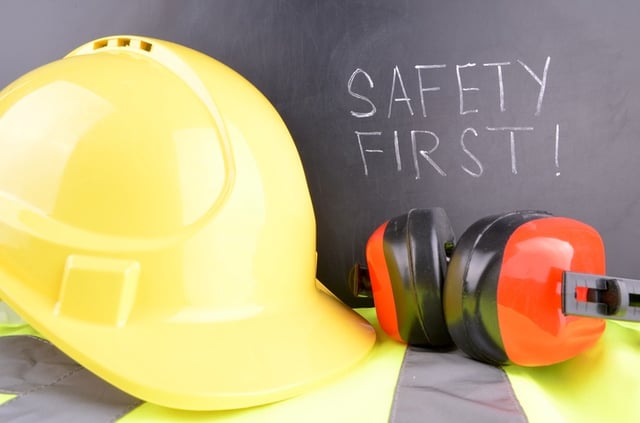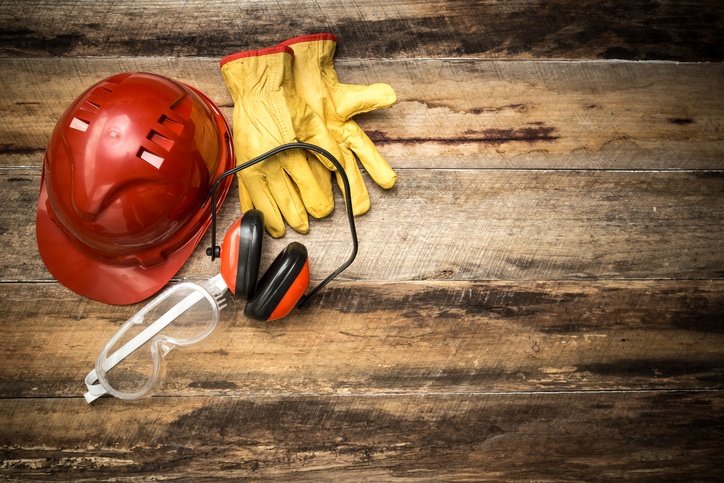4 Tips to Mitigate Workplace Health and Safety Risks

Although workplace health and safety is already a focus at many organizations, there is always plenty of room for improvement. Consider the number of workplace injuries that occur every year: In 2014, there were nearly 3 million nonfatal injuries and an additional 4,679 fatal injuries in workplaces, according to the U.S. Bureau of Labor Statistics.
These numbers are staggering. However, they do not necessarily mean that workplace injuries are inevitable. In fact, there are several important steps that your own organization can take to mitigate its workplace health and safety risks:
1. Clearly communicate your health and safety policy.
First and foremost, be sure that every employee is familiar with your workplace safety policy and how it pertains to his or her specific job. Hold regular training sessions so that the information is fresh in everyone’s minds, and ensure every new employee is brought up to speed right away.
In addition, consider how to best distribute your policy to your employees. You might post key information in common areas, such as lunch rooms, or provide a health and safety handbook to all employees. Or you can leverage mobile technology by uploading your policy onto a mobile emergency management app, which provides all employees with anywhere, anytime access to key information. No matter what method you choose, ensure that everyone can access the information when they need it most.
2. Deal with hazards quickly.
Be sure to reconcile all risks right away. And remember: slippery floors, clutter and other relatively small problems can actually cause significant risks in the workplace. The majority of work injuries are slip-and-fall claims, most often from preventable dangers.
Establish an effective protocol for employees to report and deal with hazards. This is another area where a mobile app is helpful; regardless of when or where an incident occurs, the app allows employees to immediately notify the relevant department using their mobile devices. They can also access relevant health and safety documents, such as flowcharts, contact lists and regulation details.
3. Make health and safety part of your culture.
Workplace health and safety isn’t the sole responsibility of one individual or department; it is a goal that belongs to everyone. That’s why a safety “culture” should be the objective of every organization.
Make it clear that health and safety are everyone’s responsibility. If necessary, establish an incentive system to recognize those who set a good example. Meanwhile, work to ensure all employees know how to recognize and fix specific hazards. For example, to minimize slip-and-fall risk, educate them on best practices for reducing clutter, securing cords, reaching objects at an elevated height and other relevant situations.
4. Equip employees for health and safety.
It can be challenging for employees to avoid injuries and illnesses if your organization doesn’t provide them with the tools needed to stay safe and healthy. This is particularly true in industries such as manufacturing or energy, where simple steps such as requiring personal protective equipment and providing first-aid supplies can significantly reduce everyday hazards.
Even in corporate offices, providing the right tools for the job can help. For example, ensure desk chairs and computer equipment are ergonomic. Provide step ladders to discourage employees from using rolling chairs and other means to reach supplies. Equip each area with fire extinguishers and other relevant tools. Consider whether your facility would benefit from additional items, such as area rugs, which reduce slippery floors, or convex mirrors, which reduce collisions at blind corners.
When possible, also take design into account. Practice “prevention through design,” or PtD, by identifying and eliminating hazards during the design phase of new facilities or processes.
Addressing health and safety risks at the front end can save significant time and money—and also avoid unnecessary injuries. Even simple engineering controls, such as guardrails and skid-proof materials, can go a long way toward preventing many of the more common accidents. Although these steps can cost some money upfront, they also may save your organization even more in the long run.
What steps does your organization currently take to mitigate health and safety risks? Where do the majority of your incidents occur?










